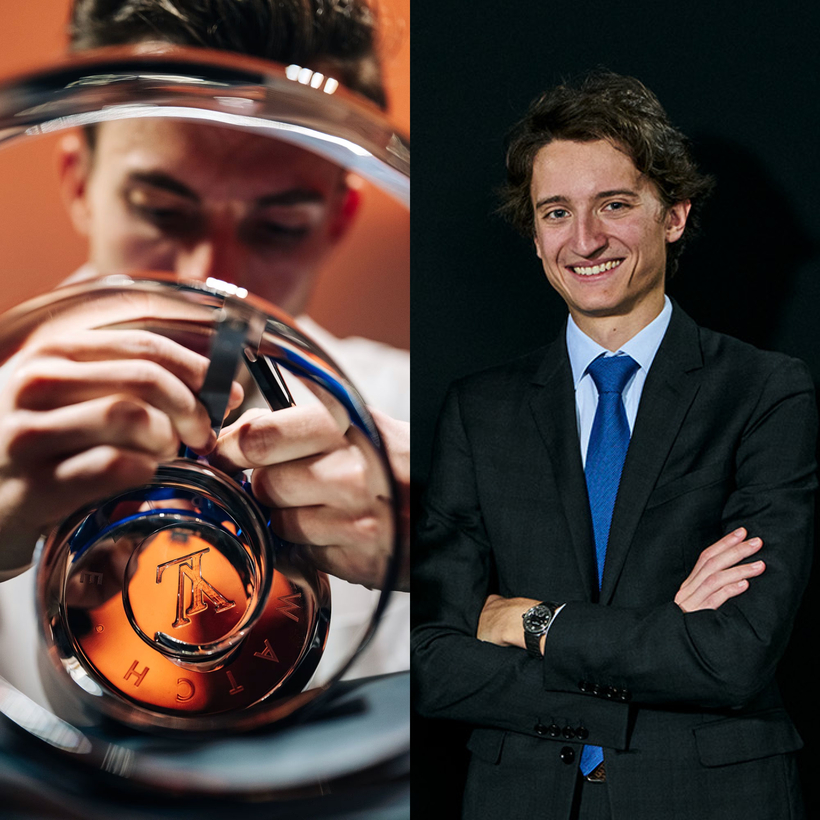Since it opened, a decade ago, the confection of billowing glass sails that is the Frank Gehry–designed Fondation Louis Vuitton, in the Bois de Boulogne, has welcomed visitors in their millions to blockbuster shows. At the moment, thousands a day troop through its airy galleries to marvel at the Rothko retrospective, but not all visitors come to genuflect at the altar of Abstract Expressionism. Some come for the watches.
On a Tuesday last month the building was packed with the great and the good of the watch industry: Evelyne Genta, Monaco’s ambassador to the United Kingdom and widow of design legend Gérald Genta; Hodinkee founder Ben Clymer, watchmaking’s Mark Zuckerberg; Mike Tay, Singaporean watch magnate; Justin Reis, co-founder and C.E.O. of trans-national secondary-market retailer WatchBox; Rexhep and Annabelle Rexhepi, the glamour couple of young, independent Geneva watchmaking; the collector’s collector Auro Montanari; Carine Maillard, the ever elegant director of the Grand Prix d’Horlogerie de Genève, watchmaking’s Oscars; Carole Forestier-Kasapi, star movement designer.

Almost everyone in the room was someone, and many of them, me included, had been a member of the extended jury of the Louis Vuitton Watch Prize for Independent Creatives, the presentation of which occasioned our presence in Gehry’s cathedral-like entrance hall.
The impressive turnout testified to two things: first, the might of Louis Vuitton; second, the charm of the 25-year-old in charge of Louis Vuitton’s watches, Jean Arnault, the youngest of Bernard Arnault’s five children.
While many kids are learning to handle a stick shift, Arnaults are already operating the levers of power. The family is the subject of endless speculation and media attention of the kind that used to be reserved for members of the Kennedy clan. And now that there are two Arnaults in watches—Jean’s elder brother Frédéric runs the watch division of LVMH and turned Jean on to timepieces—the watch industry has caught the attention of the fashion, and business, media. It’s what you might call the Arnault effect.

Watchmaking long ago ceased to be a slow-moving quasi–cottage industry, but the fact that it interests the second generation of luxury’s first family is a recent phenomenon, and the effect Jean has had on watchmaking at Louis Vuitton since his arrival there, in 2021, has been transformative. After two decades of being little more than another Louis Vuitton–branded product sector, the watch division is now run by a committed watch fanboy with effectively limitless resources at his disposal.
He has worked hard and fast. I have never cared for the Tambour, the brand’s signature watch, but since its total overhaul and redesign, including a new movement, in less than two years (which for watchmaking must be some sort of record), I dislike it much less and can only respect the upgrade in quality. Had Jean Arnault not been in charge, it would not have happened.
While many kids are learning to handle a stick shift, Arnaults are already operating the levers of power.
Jean already speaks fluent watch nerd: ask him about the grandes sonneries made by Gerald Genta and prepare for a lecture in horological acoustics. He cares about the microscopic intricacies and will lose sleep over a difference of 0.2 mm. in the dimensions of the guilloche engraving on the dial of a Daniel Roth.

Creating, and collecting, watches is all about this level of painstaking attention to detail. The difference for Jean is that if he requires a couple of hundred-year-old guilloche machines to make the pattern 0.3 mm. instead of 0.5 mm., then the world will be scoured until they are located, stripped down, and rebuilt.
The Louis Vuitton Watch Prize for Creative Independents is another fruit of his magnificent obsession with watches. Designed to “celebrate excellence and exceptional savoir-faire in watchmaking,” it clearly shows that Jean wants the current excitement around independent watchmaking to be more than a fad. As a result, he has put up a prize of $163,000, access to all the resources at his Willy Wonka–like watch manufacturing facility in Geneva, and a trophy of a size and shininess that would not look out of place on the winner’s podium of a Formula 1 race. (Naturally, it comes with its own Vuitton trunk.)

If nothing else, the long list of finalists, based in locations as diverse as Canada and China, proved the polyglot range of independent watchmaking today. This year’s short list of five finalists included a tabletop timepiece that was a 21st-century take on the 230-year-old idea of the pendule sympathique, and a mechanical time-telling bee whose stinger indicates the hour. There was a trio of watches: one from the fashionable maker Simon Brette; the watch I would have chosen to wear home, the Petermann Bédat split-seconds Chronographe Rattrapante; and the winning piece, a steel watch with a regulator dial and detent escapement by Raúl Pagès.
Louis Vuitton’s watch division is now run by a committed watch fanboy with effectively limitless recourses at his disposal.
It was simultaneously the most unassuming and most remarkable of the finalists. For reasons of brevity—and to conceal the extent of my own ignorance—suffice to say, putting a detent escapement into a wristwatch is a feat akin to putting a car into lunar orbit. When correctly regulated, the detent escapement is eerily precise, to within a second or so a day, but it is also highly susceptible to knocks, so it was mainly used in marine chronometers mounted on gimbals to minimize shocks. Given that in the 18th century a good marine chronometer could cost as much as a third the price of a ship, you get the idea of the prestige of this achievement, a prestige matched by the awards ceremony itself.

Although it set out to honor watchmaking, there was something of a couture runway show about the evening, including Bernard Arnault and his wife, Hélène Mercier, sitting in the center of a fashion-show-like front row, looking on with evident pride.
It was an impressive debut, and maybe one day, the time will come when the Fondation Louis Vuitton mounts a watch exhibition.
Nicholas Foulkes, the author of more than 20 books on the arts and history, is a London-based writer and editor


